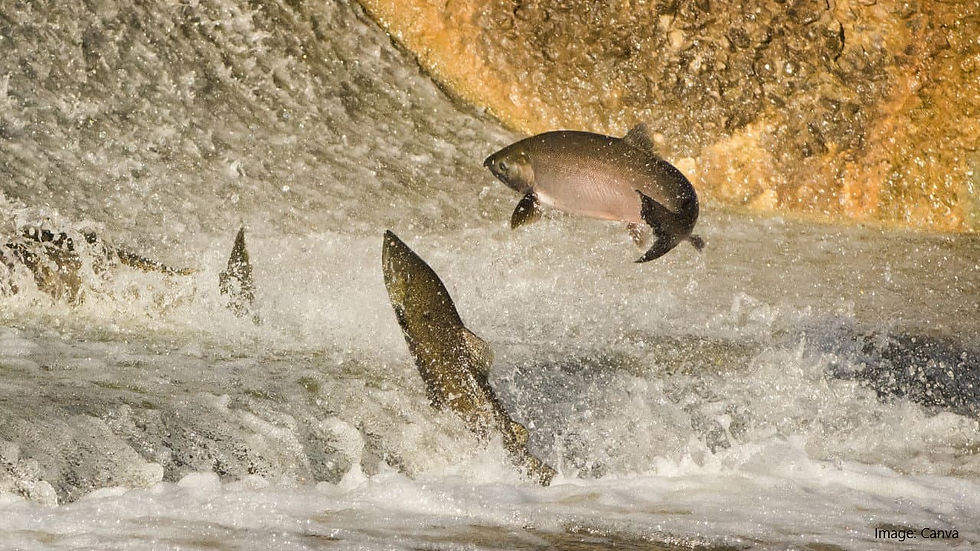I mentioned habitat fragmentation in November's Fish of the Month (The Huchen), but do you know what it means? Habitat fragmentation can affect any living species - not just fish. What it means, is that a large area of habitat that a species may have lived in for a long time has been broken up into smaller pieces, making it hard for those species to move to all of the smaller areas and interact with others in those areas.
Imagine a huge forest where sparrows or other small birds, for example, can fly between each tree without being seen by predatory hawks from above. Suddenly, humans come along and chop down the forest leaving only small groups of trees intact, with large areas of treeless land between them. Suddenly, the birds feel trapped to their own little patch of forest - too afraid to cross the open ground and reach the other groups of trees as they will be exposed to predators perhaps. This happens to Koalas when roads or urban development causes fragmetation of their habitat. Koalas have to cross open ground leaving them exposed to car strikes and dog attacks - two very real consequences of habitat fragmentation.
But back to water - how does habitat fragmentation affect fish? Well, this month we are focusing on dams, and these big structures can be a barrier to fish that need to migrate upstream or downstream past the barrier. Some dams have fishways, or fish ladders installed to allow fish to pass by them, but many don't. So this causes habitat fragmentation - the river upstream of the dam is fragmented from the river downstream of the dam. Another example is a river that dries up. Extreme drought, or too much water use might leave some rivers so low that only a string of waterholes with dry land between them remains. Because fish can't travel over land between waterholes, their habitat has been fragmented.

Habitat fragmentation does not have to be caused by physical barriers either. Water temperatures can cause it - migratory warmwater species may not be able to pass an area of cold water from a bottom release dam, or conversely, coldwater species might avoid areas of rivers where hot springs, or hot water from factories enters a river. In this way, fish upstream and downstream of the temperature 'barrier' are isolated from each other - i.e., habitat fragmentation. pollution can be another cause. Can you think of any more?

Habitat fragmentation can be bad for many species and many reasons. Salmon, and other migrating fish, may not be able to reach spawning grounds upstream because a dam is blocking their way - this means the fish can't reproduce very well, which lowers the population of the next generations. Some rivers have lost all of their salmon because they can't breed effectively, quickly falling victim to an extinction spiral. Another way habitat fragmentation can affect populations of species is the loss of genetic variety. This can lead to popluations becoming inbred, or losing much of their 'fitness' and ability to cope with changing environmental factors, further reducing their numbers.




コメント